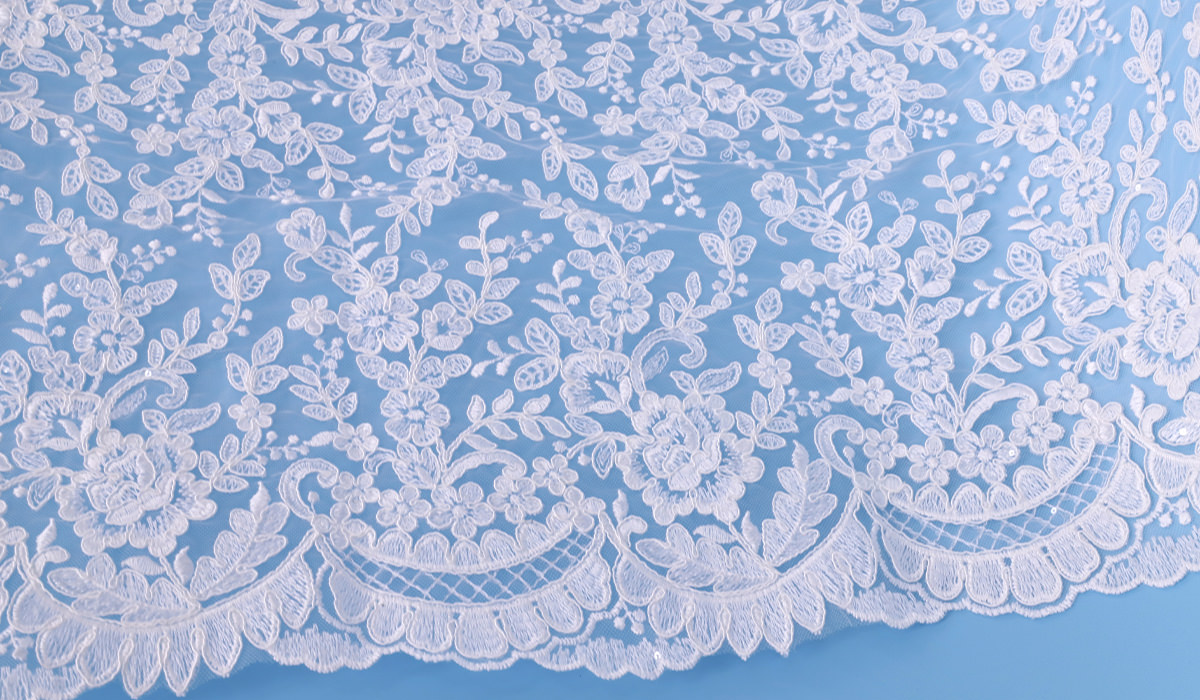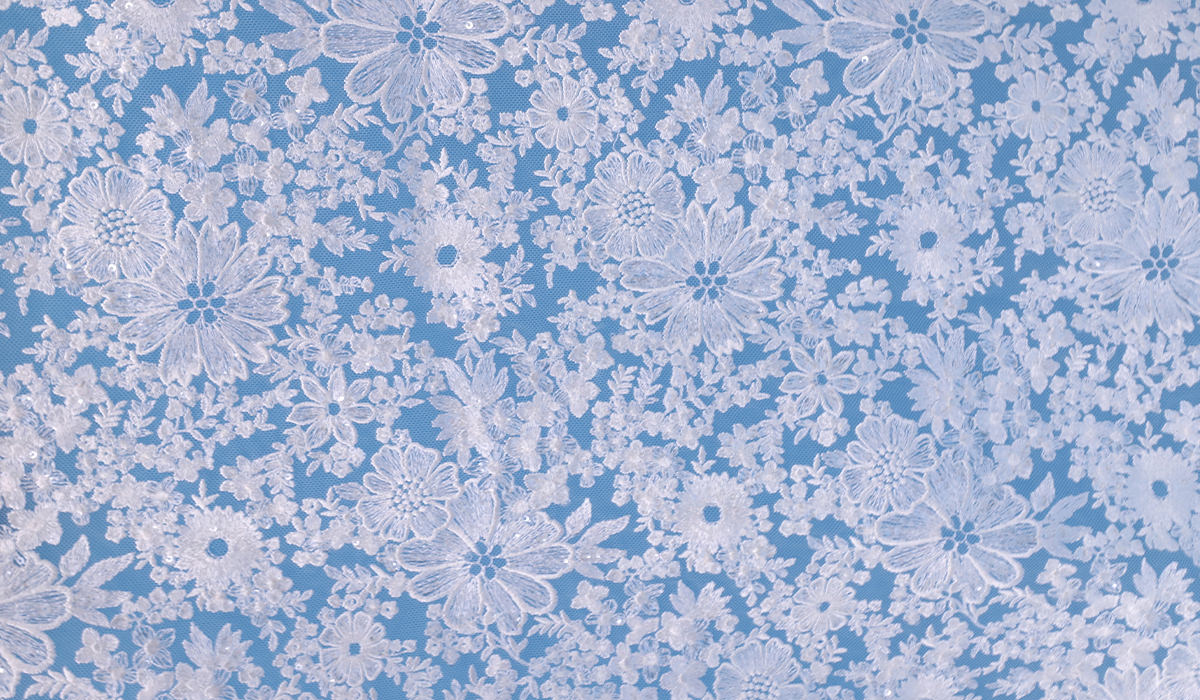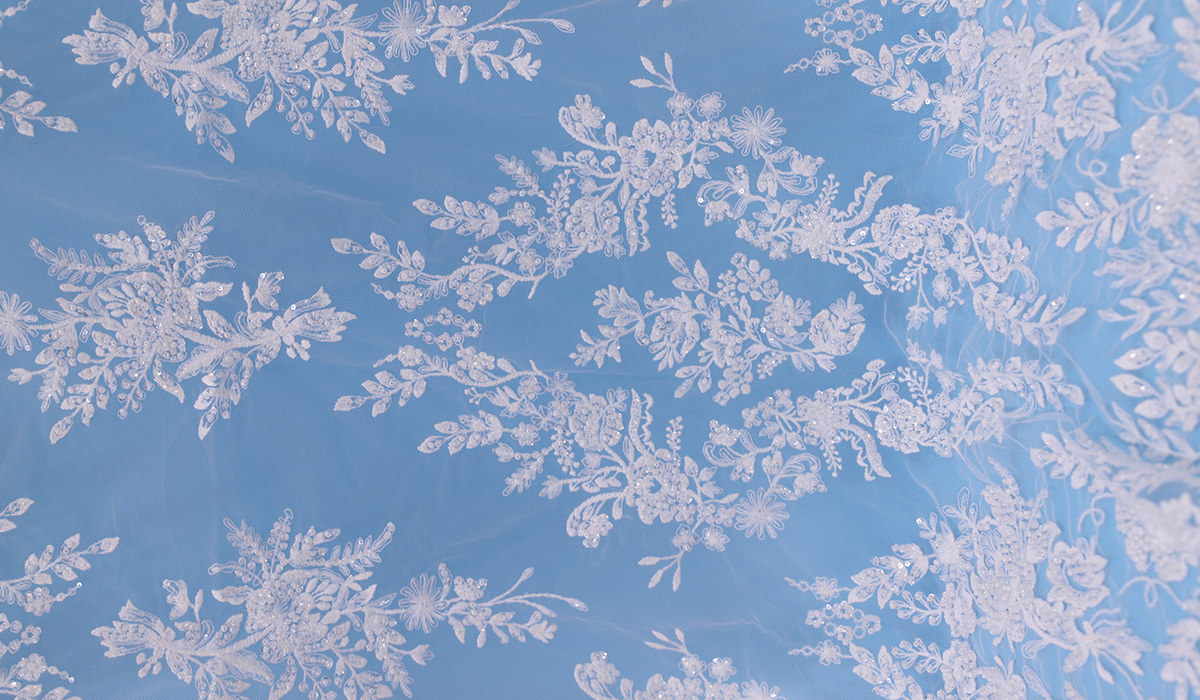From Sketch to Stitch: Creating Stunning Wedding Dresses with Floral Lace and Sequins

Designing a wedding dress is one of the most exciting and challenging tasks in fashion design. Brides look for gowns that are not only beautiful but also unique, reflecting their personal style. Floral lace with sequins is a timeless element in bridal fashion that adds sophistication, elegance, and sparkle. However, designing a dress with these intricate materials requires careful planning and skillful execution.
In this blog, we’ll walk you through the process of creating stunning wedding dresses with floral lace and sequins, from the initial sketch to the final stitch.
1. Starting with a Vision: The Initial Sketch
Every wedding dress begins with an idea. Before you even think about fabrics and materials, start with a vision that aligns with the bride’s preferences and your creative style. The key to a successful design is to understand how floral lace and sequins can be incorporated into the dress.
Tips for sketching:
- Consider the Silhouette: When sketching, decide on the silhouette that will best complement the floral lace and sequins. A-line, mermaid, and ballgown silhouettes are popular choices for highlighting intricate lace patterns.
- Emphasise Details: Sketch in detail where the lace and sequins will be placed. The bodice, sleeves, and train are ideal areas to showcase floral lace. Add sparkly sequins for a subtle yet eye-catching effect.
- Balance Proportions: When sketching floral lace with sequins, be mindful of proportions. Too much embellishment can overpower the dress, so create balance by choosing key areas for the details.
Starting with a clear and precise sketch allows you to plan out where the floral lace and sequins will best accentuate the gown and ensure the overall design is cohesive.

2. Selecting the Right Fabrics
After completing the sketch, it’s time to select the fabrics that will bring your design to life. The choice of fabric plays a significant role in how the floral lace and sequins will be integrated into the final dress.
Key considerations for fabric selection:
- Base Fabric: The base fabric should complement the weight and texture of the floral lace and sequins. Soft fabrics like tulle, chiffon, or silk satin are excellent for creating a flowing, romantic look that pairs beautifully with lace.
- Floral Lace Selection: Choose a floral lace pattern that matches the style of the dress. Heavier lace with larger floral motifs is perfect for structured gowns, while lightweight, delicate lace suits softer, more ethereal dresses.
- Sequin Type: Select sequins that add sparkle without overpowering the lace. Transparent or silver sequins work well for creating a subtle shimmer, while coloured sequins can make a bolder statement.
The combination of these fabrics will define the overall aesthetic of the gown, so it’s important to choose materials that enhance the look and feel of the floral lace and sequins.

3. Placing the Floral Lace and Sequins for Maximum Impact
The placement of floral lace and sequins can transform an ordinary dress into a breathtaking masterpiece. Strategic placement not only enhances the dress’s beauty but also flatters the bride’s figure.
Ideas for lace and sequin placement:
- Bodice and Neckline: Floral lace on the bodice adds texture and elegance, especially when paired with sequins that catch the light. Consider a lace-covered illusion neckline or lace appliqués along a sweetheart neckline.
- Sleeves and Straps: For a more romantic look, place floral lace on long sleeves or delicate straps. Sequins can be lightly scattered along the sleeves for a touch of sparkle.
- Skirt and Train: For the skirt and train, consider cascading floral lace with sequins that gradually fade out, creating a sense of flow and movement. This technique adds dimension and interest to the gown, especially during the bride’s walk down the aisle.
- Back Design: The back of the dress can be just as important as the front. Floral lace with sequins along a keyhole or low-back design can create a showstopping effect.
When placing the lace and sequins, remember that less is often more. Highlight specific areas of the dress to create a balanced and harmonious look that doesn’t overwhelm the bride.

4. Stitching Techniques for Seamless Integration
Once the lace and sequins have been placed, the next challenge is stitching them seamlessly into the gown. This requires precision and care, especially when working with delicate materials.
Stitching tips:
- Hand-Stitching vs. Machine-Stitching: While some parts of the dress can be machine-stitched, lace and sequins often require hand-stitching to ensure they are attached securely without damaging the fabric.
- Appliqué Technique: Use the appliqué technique to sew lace onto the gown. This involves cutting out lace motifs and hand-stitching them onto the fabric. This method allows you to customise the placement of the lace and ensures it blends seamlessly with the base fabric.
- Securing Sequins: When stitching sequins, use a fine needle and invisible thread to ensure that they remain securely attached without visible stitching. If the sequins are sewn onto the lace, be careful not to pull too tightly to avoid distorting the lace pattern.
By using the right stitching techniques, you can ensure that the lace and sequins are securely integrated into the gown without compromising its structure or design.
5. Final Touches: Bringing the Dress to Life
The final stage of creating the dress involves adding the finishing touches. This is where you check for any adjustments that need to be made and ensure that every detail is perfect.
Final considerations:
- Fit and Adjustments: Ensure the dress fits perfectly by making any necessary adjustments to the bodice, waist, or hemline. The lace and sequins should sit naturally on the body without pulling or sagging.
- Sequin Distribution: Make sure the sequins are evenly distributed and catch the light in the right places, enhancing the bride’s movement and overall look.
- Final Embellishments: Add any additional embellishments, such as pearls or crystals, if needed, to enhance the lace and sequin details.
With all the elements in place, the dress is ready to dazzle on the bride’s special day.
Conclusion
Designing a wedding dress with floral lace and sequins is a rewarding process that requires attention to detail, creativity, and technical skill. By starting with a well-planned sketch, selecting the right fabrics, and carefully placing and stitching the lace and sequins, you can create a stunning gown that is sure to impress.
For designers, mastering these techniques will not only make the dress design process easier but will also allow you to create gowns that capture the essence of romance, elegance, and beauty—making every bride’s dream come true.




